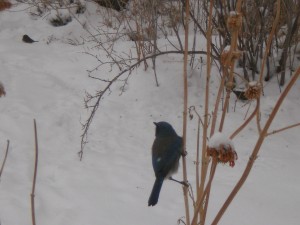When I was a little girl, every spring my grandpa would go to the local nursery and buy pansies for my grandma. The nursery had started them the year before, in August, in the ground! Yep, planted in dirt. In March they dug them, wrapped them in newspapers and my grandpa brought them home to plant them in the garden that very day. Those pansies never saw the inside of a greenhouse and they didn’t know the feel of plastic on their roots. This was a time before plastic had invaded the Green Industry.
Fast forward to 2011. Landscaping companies, greenhouses, nurseries–we still call ourselves members of The Green Industry, because we all have something to do with plants, and plants are green…but Green means something else in today’s world, and I’m not sure the Green Industry is very Green at all.
I could go on and on about all the things our industry does that are wrong. Most commercial greenhouses (like 99.9%) are covered with plastic, heated by fossil fuels, and filled with plants in plastic containers. If you poke your head into a commercial greenhouse in March, it might look green but can we really call it Green?
When Merrilee and I started this business in 1987, we made decisions that we thought were good for the environment and good for us. We decided to grow perennials, because they are cold hardy and can be grown with really no heat at all in Colorado, if you’re willing to work with their natural cycle. Our first greenhouse (and one that we still use) was a solar greenhouse, built to function without fossil fuel. We refused to use chemical pesticides and herbicides because we live here and we didn’t want to pollute this beautiful place.
Over the years, and in an attempt to survive in a business that is NOT a get rich quick kind of thing, we’ve added more greenhouses that we heat with fossil fuel so that we can get a jump on the season. People are used to buying plants in bloom, and if you want a plant that is in active growth and blooming in May, you’re going to have to grow it in a heated greenhouse. We have never compromised our values and resorted to using petrochemical pesticides or herbicides, but still there are so many ways we see that we could be greener.
One thing we’ve started doing in the last few years is limiting the time we heat. We used to start heating two or three of our houses in late February or early March. Now we start one on March first, the next one a week later, and so on. That has cut down a lot on the amount of fuel we use because the earlier weeks are so much colder and need so much more fuel. We keep the temperature in the houses to the minimum. Our bare root shrub and rose house is heated to 38 F. at night, just enough to keep them from freezing. The perennials that we grow from seeds and plugs are kept at 47 F. We’ve added annuals to our long list of plants, and the annual house is kept at 50 F. at night. That’s the last house that we start heating and it is only heated for a month and a half.
We discovered by accident (heater failure) that the newly planted bareroot fruit trees can survive temperatures down to 10 F. and still be fine. That was a good surprise because now we grow a certain number of our apple trees and apricot trees in an unheated space. More fossil fuel savings! After we made that discovery, we found out that lots of other people in the nursery business already knew this….
We reuse our plastic as much as possible. The trays are used until they are too broken to keep. We do the same thing with our plastic pots, and we will take back any of our pots that customers bring us. Sadly we cannot recycle pots from other nurseries that have plastic labels glued to them–the labels are almost impossible to remove and take so much time we can’t afford to do it.
Our goal is to find new ways each year to do as much or more with less. We know this matters to the environment, to you, and to all the generations to come.
Junco on the Lion’s Ear: another good reason to grow organically!
P.S. I reread this after posting and I’m not sure it says what I wanted it to say. I don’t want to make it sound like Perennial Favorites is a paragon of environmental virtue or put down what anyone else in the biz is doing. I’m struggling, like so many people are, with figuring out how to live in this soon-to-be post-petrochemical world. I was prompted to write because of this video. Check it out. http://www.youtube.com/watch?v=_XQIxr4gRQM

